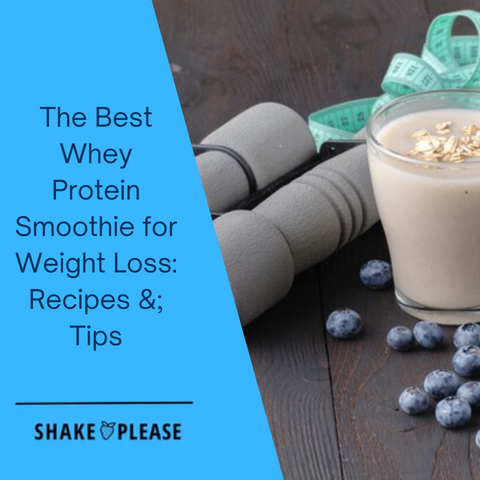
What is a Banana Smoothie?
A banana smoothie is a creamy, blended drink where ripe bananas take center stage. Typically prepared with ingredients like milk, yogurt, or non-dairy alternatives, it often includes additional fruits or greens for enhanced flavor and nutrition. Its versatility makes it a go-to choice for breakfast, a mid-day snack, or a post-workout refresher.
This one smoothie recipe is highly adaptable, catering to various taste preferences and dietary goals. From simple banana-only blends to nutrient-packed versions featuring spinach, almond butter, or protein powders, banana smoothies provide a satisfying and easy way to include essential nutrients in your daily diet.
Ripe vs Unripe Banana - Which is Better for Your Health?
The Benefits of Fruit Smoothies
Fruit smoothies provide a delicious and practical method to increase your intake of essential fruits and vegetables. As a versatile meal or snack option, great fruit smoothies combine a variety of nutrient-dense ingredients, offering a powerful nutritional boost in a single serving.
Researchers have found that blending fruits and vegetables can help preserve their fiber content while making many fruits and nutrients more accessible for digestion and absorption. This process ensures you’re maximizing the benefits of each ingredient in fresh fruit, such as vitamins, antioxidants, and minerals.
Fruit smoothies are particularly appealing for their ability to combine diverse ingredients like leafy greens mixed berries, nuts, seeds, and even superfoods like chia seeds or spirulina. They can be tailored to suit various health goals, such as energy boosting, detoxifying, or aiding muscle recovery. Whether as a quick breakfast, a midday energy boost, or a post-workout recovery drink, fruit smoothies offer a balance of taste and nutrition.
The Nutritional Value of Bananas
Bananas are an excellent foundation for any smoothie due to their rich nutrient profile and creamy texture. These popular fruits are packed with potassium, which supports heart health, muscle function, and electrolyte balance. Additionally, bananas contain vitamins B6 and C, essential for brain function and immune support.
High in dietary fiber, bananas promote healthy digestion and can help you feel fuller for longer, making them a great choice for weight management when consumed in moderation. They are also a natural source of quick energy, thanks to their easily digestible carbohydrates, making them ideal for athletes or anyone needing a pre- or post-workout snack.
However, it’s important to note that bananas are relatively high in natural sugars and calories compared to other fruits and vegetables. While they can be a valuable addition to a balanced diet, overconsumption—especially in the form of large, calorie-dense smoothies—may contribute to unwanted weight gain. Balancing bananas with low-sugar fruits and protein-rich or healthy fat ingredients can help mitigate this concern while enhancing the overall nutritional value of adding a single banana alone to your smoothie.
Creating a Healthy Banana Smoothie
A banana smoothie is a versatile base that can be elevated with additional ingredients for a nutrient-packed, satisfying drink. Here’s how to craft a balanced and healthy banana smoothie:
-
Choose Your Base:
Start with frozen bananas for a creamy texture and natural sweetness. Freezing also eliminates the need for additional ice, ensuring the flavors remain concentrated. -
Add Nutritional Variety:
-
Incorporate other fruits like berries, which are rich in antioxidants, or citrus fruits, which add vitamin C and a refreshing tang.
-
Add leafy greens like spinach for a boost of vitamins and minerals without altering the smoothie’s flavor significantly.
-
-
Include a Protein Source:
-
Greek yogurt is an excellent choice, adding creaminess and a substantial protein boost to keep you full longer.
-
Protein powder (whey or plant-based) can help meet daily protein needs, especially post-workout.
-
-
Choose a Liquid Base:
Opt for low-calorie milk alternatives like almond milk, oat milk, or coconut milk to create a creamy yet light smoothie. These options are great for those looking to reduce calories or follow dairy-free diets. -
Enhance the Flavor:
Add spices like cinnamon or vanilla extract for depth, or a spoonful of almond butter for a nutty, satisfying touch.
The Power of Banana and Blueberry Smoothie
Combining bananas with blueberries creates a smoothie that’s not only flavorful but also rich in health benefits. Here’s why this pairing stands out:
-
Nutritional Synergy:
-
Blueberries are celebrated for their high levels of antioxidants, particularly flavanols, which help combat oxidative stress, support heart health, and enhance cognitive function.
-
Bananas bring potassium and fiber to the mix, aiding digestion and promoting energy balance.
-
-
Potential Bioavailability Consideration:
While bananas and blueberries are both nutrient-dense, studies suggest that bananas’ high polyphenol oxidase (PPO) activity can reduce the bioavailability of flavanols in blueberries. To maximize antioxidant absorption, consider adjusting the ratio of bananas to blueberries or blending them with additional flavanol-rich fruits like raspberries or cherries. -
Flavor Balance:
The natural sweetness of bananas complements the tartness of blueberries, creating a balanced flavor profile. This makes the smoothie enjoyable without the need for added sweeteners.
Recipe Idea:
-
Ingredients: 1 frozen banana, 1 cup frozen blueberries, 1/2 cup Greek yogurt, 1 cup almond milk, a dash of cinnamon.
-
Instructions: Blend all ingredients until smooth. Adjust the liquid for desired consistency and enjoy a nutrient-packed treat!
By thoughtfully combining these ingredients, you can enjoy a delicious banana-blueberry smoothie while reaping its many health benefits.
Amazing Blueberry Smoothie Benefits: Blend Your Way to Better Health
Tips for Customizing Your Smoothie
Customizing your morning smoothie is the perfect way to create a drink tailored to your taste preferences and nutritional needs. Here are some detailed tips to help you craft the ideal smoothie:
Experiment with Fruit and Vegetable Combinations
-
Pair bananas with sweet fruits like strawberries, blueberries, or mango for a naturally sweet and refreshing taste.
👉 Try the Strawberry Banana Protein Smoothie for a delicious blend. -
For a tropical twist, add pineapple or papaya to your banana base.
👉 Explore the Pineapple Berry Protein Smoothie for a tropical flavor explosion. -
Incorporate vegetables like spinach, kale, or cucumber for added nutrients without significantly altering the flavor.
-
Don’t shy away from combining fruits with vegetables—carrot and banana make a surprisingly tasty and nutrient-rich duo.
Add Creaminess and Nutrition
-
Nut butters like almond or peanut butter not only enhance creaminess but also provide healthy fats and protein.
👉 Check out the indulgent Chocolate Peanut Butter Banana Protein Smoothie for a creamy and satisfying option. -
Seeds such as chia, flax, or hemp add texture, omega-3 fatty acids, and fiber to your smoothie.
-
Boost your protein intake with Greek yogurt or a plant-based protein powder that complements your smoothie’s flavor.
Boost Vitamins and Minerals
-
Add leafy greens like spinach or kale to increase your intake of vitamins A, C, and K, as well as iron and antioxidants.
-
Enhance flavor and gain anti-inflammatory benefits with a dash of cinnamon or turmeric.
-
A splash of fruit juice can add an extra layer of natural sweetness and nutrients.
👉 The Vanilla Berry Protein Smoothie is a great option for a balanced, nutrient-rich smoothie.
Customize the Liquid Base
-
For a creamy, dairy-free option, use unsweetened almond milk or coconut milk.
-
Opt for coconut water or plain water for a lighter, hydrating texture.
-
Prefer a sweeter smoothie? Add a splash of fruit juice like orange or pineapple juice to complement the natural flavors.
Common Mistakes to Avoid
Even the healthiest smoothie can go off track if you make these common food mistakes. Here’s how to avoid them:
-
Overloading on Sugar and Sweeteners
-
Adding too much honey, agave syrup, or sugar can quickly turn your smoothie into a calorie bomb.
-
Instead, rely on the natural sweetness of fruits like ripe bananas, mangoes, or berries. If you need additional sweetness, consider a small amount of stevia or monk fruit sweetener.
-
-
Using Too Many Bananas
-
While bananas are a great base ingredient, they are high in natural sugars and calories. Stick to one banana per smoothie to maintain balance.
-
If you want extra creaminess without additional sugar, use half a banana and substitute the rest with avocado.
-
-
Neglecting Nutrient Interactions
-
Be mindful of how certain fruits interact. For example, bananas contain polyphenol oxidase (PPO), which may reduce the bioavailability of flavanols in fruits like blueberries.
-
If you’re blending bananas with blueberries, consume the smoothie quickly or store it in the fridge to minimize nutrient degradation.
-
-
Ignoring Portion Sizes
-
It’s easy to overdo it when adding ingredients, leading to a smoothie that’s too large and calorie-dense for a single serving. Use measuring cups to control portions of fruits, nuts, and seeds.
-
-
Skipping a Protein Source
-
Smoothies made purely from fruits and vegetables may leave you hungry shortly after. Always include a protein source like Greek yogurt, nut butter, or protein powder to keep you satisfied for longer.
-
By following these detailed food preparation tips and avoiding common food preparation mistakes, you can craft smoothies that are both delicious and packed with the nutrients your body needs.
Incorporating Banana Smoothies into Your Healthy Diet
Including banana smoothies in your diet can be a fantastic way to enjoy a nutritious and delicious drink while meeting your daily fruit and nutrient needs. Here are some tips for incorporating banana smoothies into a balanced lifestyle:
-
Diversify Your Ingredients
-
Avoid relying solely on a single smoothie recipe. Rotate the fruits, vegetables, and other ingredients in your smoothies to ensure a variety of vitamins, minerals, and antioxidants.
-
Pair bananas with nutrient-dense ingredients like spinach, chia seeds, and berries for a well-rounded drink.
-
-
Start Your Morning with a Banana Smoothie
-
A banana smoothie can serve as an energizing breakfast option. Combine bananas with oats, almond milk, and a scoop of protein powder for sustained energy throughout the morning.
-
Add nuts or seeds for healthy fats and a sprinkle of cinnamon for flavor and blood sugar regulation.
-
-
Use Smoothies as Snacks or Recovery Meals
-
Banana smoothies are an excellent choice for a quick snack, providing natural energy and curbing hunger between meals.
-
Post-workout, a banana smoothie with Greek yogurt or plant-based protein powder can help replenish glycogen stores and aid muscle recovery.
-
-
Customize for Specific Needs
-
For weight management, keep portions of high-calorie ingredients like nut butter in check and focus on low-sugar fruits and almond milk as your base.
-
For an immunity boost, add citrus fruits like oranges or immune-supporting superfoods like turmeric and ginger.
-
Conclusion
Consuming freshly prepared smoothies, especially a banana-based smoothie, can be a versatile, delicious, and healthy addition to your diet. They offer an easy way to incorporate essential nutrients, support muscle recovery, and energize you throughout the day. Whether comparing bananas versus berries or crafting a mixed berry smoothie, the possibilities are endless for tailoring your smoothies to your preferences and goals.
By thoughtfully choosing your ingredients and experimenting with combinations, you can create a wide range of smoothie recipes that align with your taste preferences, cardiovascular health, and nutritional objectives. From helping manage weight to providing a nutrient-dense option to gain weight healthily, smoothies are a perfect fit for various dietary needs. Enjoy them as a quick breakfast, a post-workout snack, or a refreshing treat to promote your overall health and well-being.





